Preparing the Future Workforce
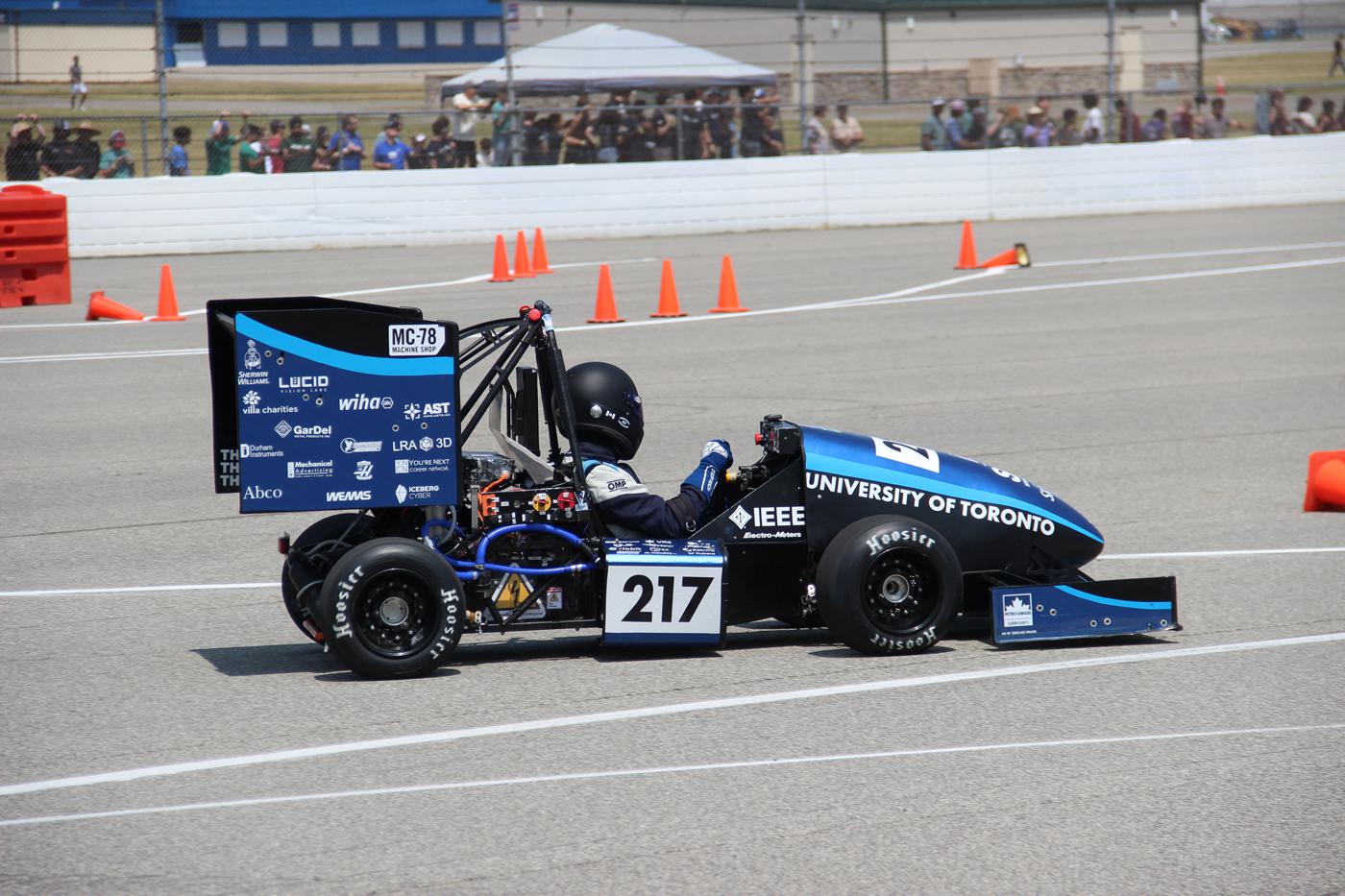
Once primarily focused on creating industry standards, the Society of Automotive Engineers has become a driving force in the effort to provide university students with hands-on vehicle development experience.
When the Society of Automotive Engineers (SAE) was originally founded in 1905, the main intent of the organization was to help the fledging auto industry address shared design problems and develop engineering standards that would support both automakers and their suppliers. While technical innovation and creativity helped to define the brands of the day, much like they do now, there was an emerging need to establish agreed-upon values for various components that were quickly becoming ubiquitous.
“Motor oil is a great example,” noted Dean Case of the SAE Southern California Section. “On the side of a quart you’ll see something like SAE 20W-50. We don’t make the oil; we determine how viscosity is measured. That way it doesn’t matter whether you buy Mobil or Pennzoil—if it said 20W-50, you know it’s going to be the right oil from a viscosity standpoint. The same goes for things like nuts and bolts. They didn’t want to get into a situation where a bolt that General Motors used wouldn’t be compatible with a Ford or a Dodge. The mindset was that the design of the cars should be unique, but a lot of the ‘boring bits’ that underpinned them needed to be commonized.” Notably, the SAE is also responsible for creating both the gross and net horsepower rating standards, the latter of which has been used by the auto industry for more than half a century.
As SAE grew and evolved over the years, it also became a knowledge base that industry professionals could leverage to help them resolve specific problems. “Local sections were established, and that expanded its reach significantly,” Case explained. “So, if someone had a technical problem, they might go to their local SAE meeting and say, ‘Hey, I need someone that’s an expert in kinematics or NVH,’ and within that SAE group they could find someone who would have specialized knowledge on that subject. It became kind of a professional networking tool as well.”
Educational institution involvement with the SAE dates all the way back to 1915, when a team at Cornell University established the first student chapter, but the relationship between the association and colleges evolved substantially in the mid-1970s. This close connection between SAE and schools continues today, and those efforts have created a direct pipeline between students and the automakers and motorsports companies that are on the hunt for the next generation of engineering talent.
Collegiate Competitions
In the early 1970s, SAE realized that the student membership would benefit from a formalized program that provided hands-on, real-world experience. “The Collegiate Design Series is really focused on providing engineering students with a platform to develop, build, and compete in the motorsports and aerospace realms,” said Allison Hostetler, director of community programs for SAE International in Warrendale, Pennsylvania. “Since student membership is a little too young to be on standards or technical committees, it gives those members an opportunity to utilize their talents and expand their skillsets through organized competition.”
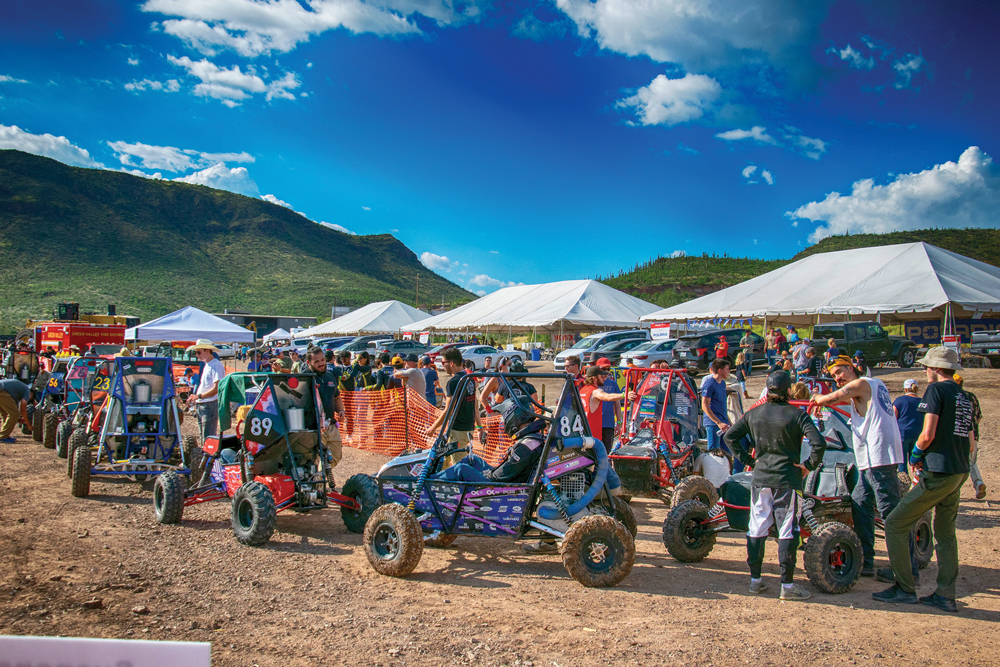
Baja SAE was the first program born out of this effort. Developed in collaboration with Briggs and Stratton, the competition got its start in 1976 and brought with it a strong emphasis on collaboration and pragmatism. “At the time, an engineering education was rooted in a lot of theory. You’d build something in the lab, but there weren’t big, team-based projects that focused on a real-world application,” said Case. “One student would be over here working on something, and another one would be over there working on his or her own thing. That was kind of a problem because that’s not how industry operates. No one designs and builds a car by themselves.”
The competition tasked teams with designing, building, and eventually competing using a single-seat dune buggy, designed around an 8-horsepower Briggs and Stratton engine, which was developed over the course of a school year. Importantly, the teams were also required to create a cost analysis and present a business proposal that outlined the feasibility of putting their design into limited production. Once completed, the prototypes were put into action in acceleration and maneuverability tests, hill climbs, and a four-hour, wheel-to-wheel endurance race.
Baja SAE quickly grew in popularity, and by the early 1980s, a push to bring a similar type of competitive program to pavement-based vehicles resulted in the creation of Formula SAE. It followed a similar format, but as the name implies, the teams’ goal was to create a formula-style open wheel race car using a four-stroke engine with displacement no greater than 710cc.
“Originally, we had a consortium model of American auto companies that came together and said, ‘We want to build a workforce development competition,’” said Hostetler. “So Formula SAE was developed with the assistance of a professor from the University of Texas to give undergrad and graduate student teams the opportunity to conceive, design, fabricate, develop, and eventually compete with these cars against other college teams.”
The program has generated a massive following in the years since, eventually leading organizers to cap annual Formula SAE participation to 120 teams from around the world. The cars developed for the competition are judged for the best overall package of design, construction, performance, and cost.
“The students get educated in the classroom, but they learn by doing the Formula SAE program,” said Don White, who serves as a mentor for the University of North Florida’s Osprey Racing team. “I think of it as almost like a ‘Shark Tank’ of formula race car design, if you will. You have dynamic events that are on track, but you also have these static events that are off track, like the business case and the cost report, that really encourage these teams to think about production feasibility when they’re designing these cars.”
The competition helps to chart a clear path for these students not only into potential jobs developing road-going passenger cars, but also important roles within motorsports. “In the 1980s and early 1990s, there wasn’t a lot of material to read about race car engineering,” said Case. “At that point in time, Carroll Smith’s books like ‘Engineer to Win’ were the bible for students who wanted to understand race car engineering. Smith eventually became one of the judges in the Formula SAE competition, and he started bringing in race engineers as design judges. That brought a lot of credibility to the competition within the motorsport realm. If you walk through any IndyCar, NASCAR, or IMSA paddock today, most of the race engineers under the age of 45 have Formula SAE or Baja SAE on their résumé.”
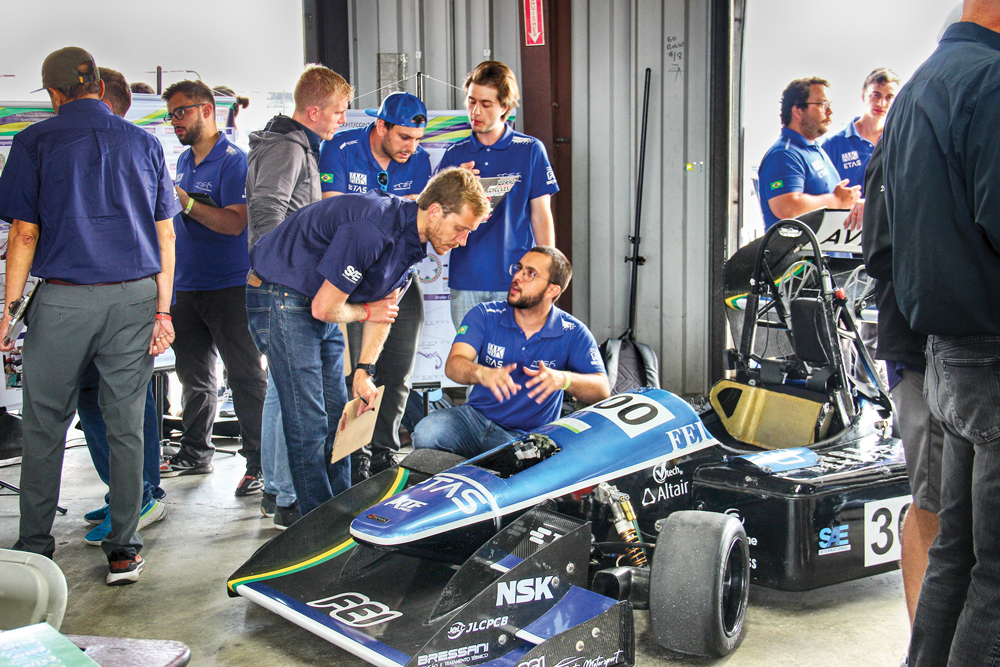
Case also pointed out that the competition makes it easier for students to move straight into a career after graduation. “If you don’t have this experience, it makes it much harder to get hired by a race team once you’re out of school. From the perspective of a race team, the people who’ve been through the Formula SAE or Baja SAE competitions have experience that puts them years ahead of other potential candidates.”
While mechanical engineering is the primary focus of most students who’re involved in SAE International’s University Programs, there’s a demand for other skillsets in this realm as well, and the need is growing. Teams utilize design and computational modeling software packages like SolidWorks, Simulink, MATLAB, and Ansys while developing their prototypes, and Hostetler said that the teams are given primers on the software and other technologies involved via industry workshops.
“That includes things like training videos and product demonstrations that are provided by the sponsors. It gives these students an opportunity to get familiarized with these software packages early on so that when they get out into the industry, they already have a working knowledge of the software standards that are being used.”
White pointed out that the program fosters other aspects of professional development as well. “Although Formula SAE is centered on building a race car, the series encompasses all aspects of engineering and business. Research, design, development, and testing are major components of it, but so are manufacturing, marketing, management, and finance.”
Perhaps most importantly, the program illustrates how lab research and development translates to a real-world, team-based project. “One of the big things is that they learn how one system can impact another,” said Case. “You can’t develop an element of the car to only work within its own little bubble. It has to work in concert with the rest of the components in the car to make it perform the way you want it to.”
Staying Current
In 2013, SAE introduced Formula EV as a class within the Formula SAE program with development assistance from volunteers in the industry. The new class followed a format similar to the standard Formula SAE competition but swapped the four-stroke ICE powertrain for a fully electric one.
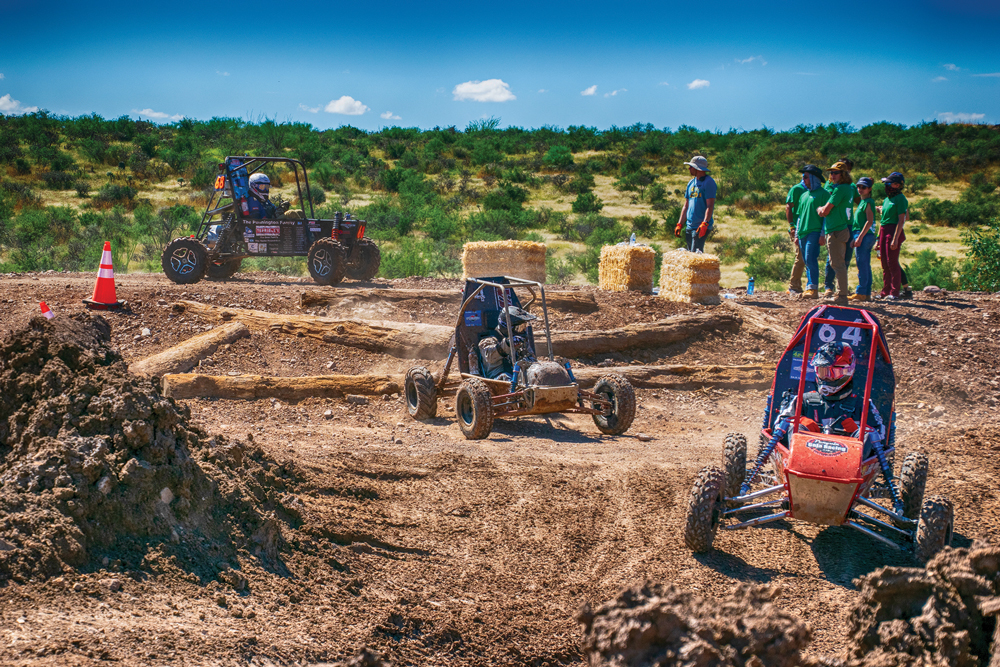
As the automotive industry continues its electrification expansion, and the use of these technologies continues to grow within motorsports, interest in the Formula EV class has grown in turn. Accordingly, in an effort to bring more visibility to the program and make it easier for teams to seek funding for the effort, SAE has reconfigured things to provide the electric competition with a larger forum.
“This past year we made some changes—we now have one internal combustion competition with Formula ICE, and another competition that is solely based around electric with Formula Electric,” said Hostetler. “There’s a growing demand for that electric powertrain knowledge, so we’re expanding this to better represent that aspect of automotive engineering. Along with mechanical tech inspection, these cars are also being tech’d for the electrical powertrain itself. And there are other aspects of functionality, like endurance and efficiency, that come into play as well.”
In order to help teams prepare for Formula Electric competition, SAE has also developed a specialized fall EV workshop that focuses on safety and the fundamentals of electric powertrains, vehicle development, and the ruleset related to the competition. “Putting an electric powertrain into a motorsport arena is very much a new ballgame,” she said. “So we want to make sure that we’re preparing students for success.” Teams participating in the Formula Electric competition are also required to go through an electrical safety review to have their system designs approved.
As the electric program has expanded, it has also attracted a new crop of prospective competitors. “Because of the electric class, Caltech is building a Formula SAE car for the first time ever,” Case told us. “And MIT is involved as well. Some of the most famous engineering schools in the world that have never been involved in the competition previously are now doing it because there’s an electric class.”
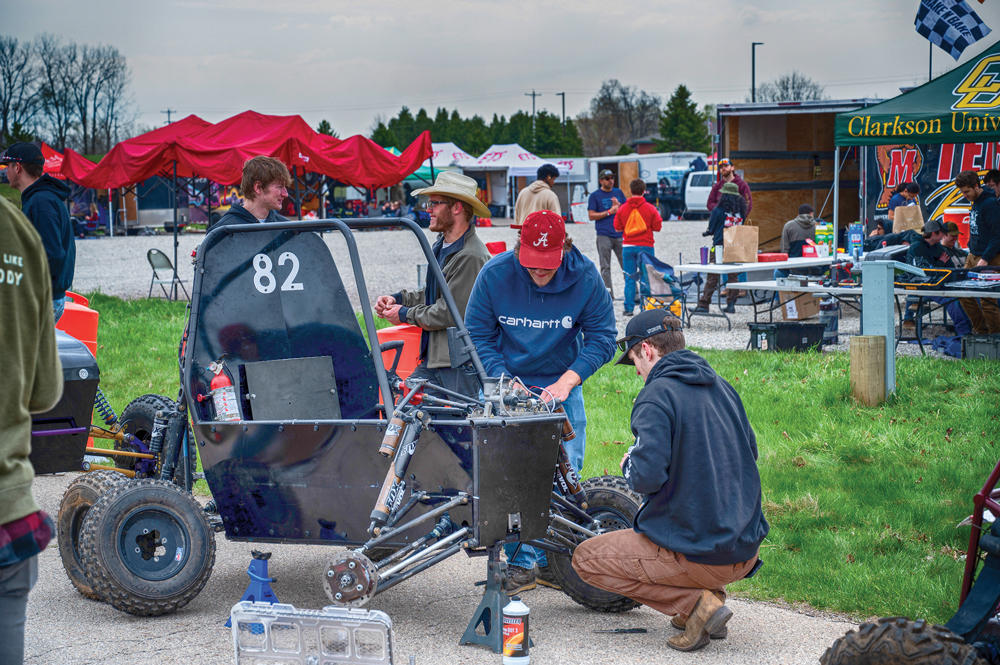
That’s also attracting students from other engineering focuses as well. “There’s a great demand for students with electrical engineering backgrounds,” he said. “If you’re building an ICE car, you can buy a MoTeC unit and do fuel injection relatively easily with off-the-shelf parts. But that kind of off-the-shelf hardware isn’t readily available for EVs, so there’s a greater need to build things from scratch. Battery packs are a huge element of this, too, not just from a capacity standpoint, but in terms of thermal management. The batteries perform their best in a specific temperature range, and keeping them in that range is a big challenge.”
Moving forward, Hostetler said that SAE International has every intention of keeping its engineering focus aligned with the contemporary demands of the industry. “Each year we go through a rules development cycle where we look at what the current industry needs are and what trends are developing, and that helps direct how the programs evolve over time. With development programs like these, we want to make sure we’re building a workforce that is capable of hitting the ground running. Catching up is not the goal. The goal is to build the future.”
SOURCES
SAE International
sae.org
University of North Florida Osprey Racing
unfsae.org
 MEMBERSHIP LOGIN
MEMBERSHIP LOGIN JOIN PRI
JOIN PRI


